A powerful solar flare measuring X3.3 erupted behind the SW limb of the Sun (AR 3575) at 13:14 UTC on February 9, 2024. The event started at 12:53 and ended at 13:32 UTC. This solar flare is the second most intense in Solar Cycle 25, following an X5.0 flare that occurred on January 31, 2023.
A Type IV Radio Emission was detected at 13:07 UTC. Type IV emissions occur in association with major eruptions on the sun and are typically associated with strong coronal mass ejections and solar radiation storms.
In addition, a 10cm Radio Burst (Tenflare) with a peak flux of 1 000 sfu and lasting 27 minutes was associated with the event. A 10cm radio burst indicates that the electromagnetic burst associated with a solar flare at the 10cm wavelength was double or greater than the initial 10cm radio background. This can be indicative of significant radio noise in association with a solar flare. This noise is generally short-lived but can cause interference for sensitive receivers including radar, GPS, and satellite communications.
While the location of this region does not favor Earth-directed coronal mass ejections (CMEs), a solar radiation storm is very likely.
Radio frequencies were forecast to be most degraded over South America, the Atlantic Ocean and Africa at the time of the flare.
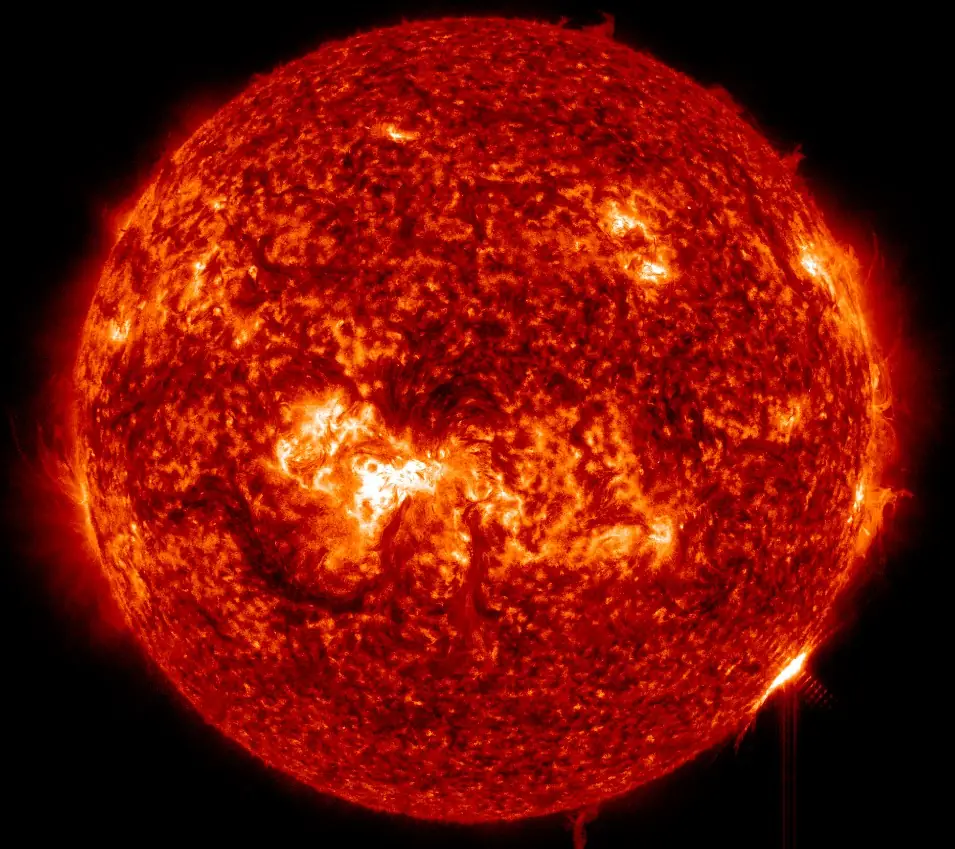

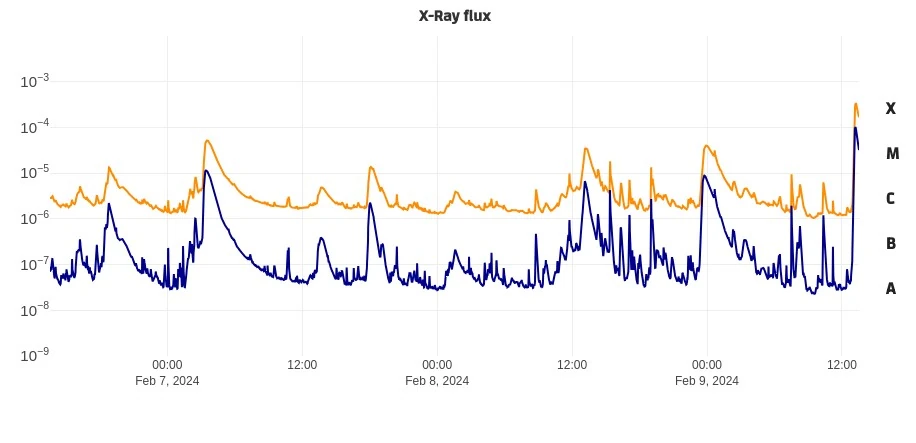

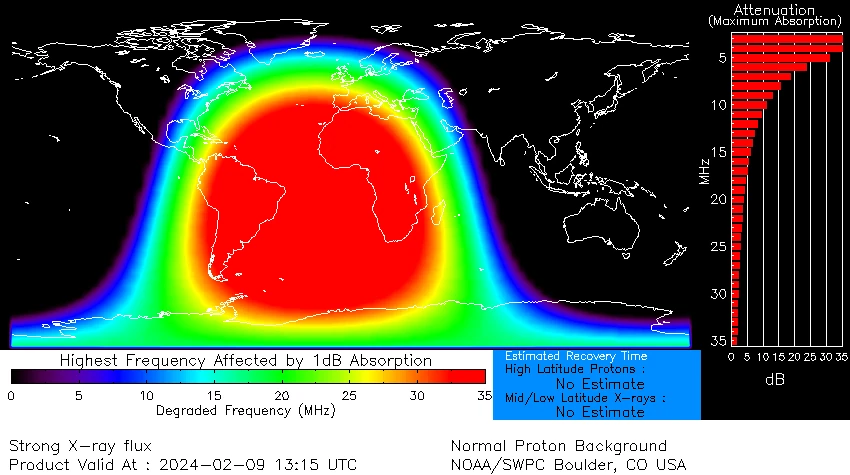

Proton flux started rapidly rising at 13:30 UTC and reached the S1 – Minor solar radiation storm threshold at 15:20 UTC.
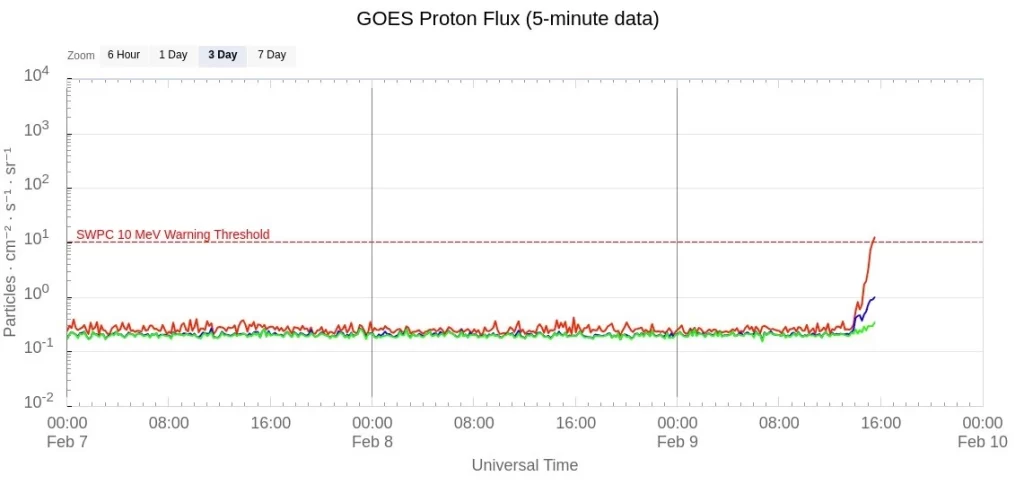

Potential effects (S1 – Minor):
Biological: None.
Satellite operations: None.
Other systems: Minor impacts on HF radio in the polar regions.
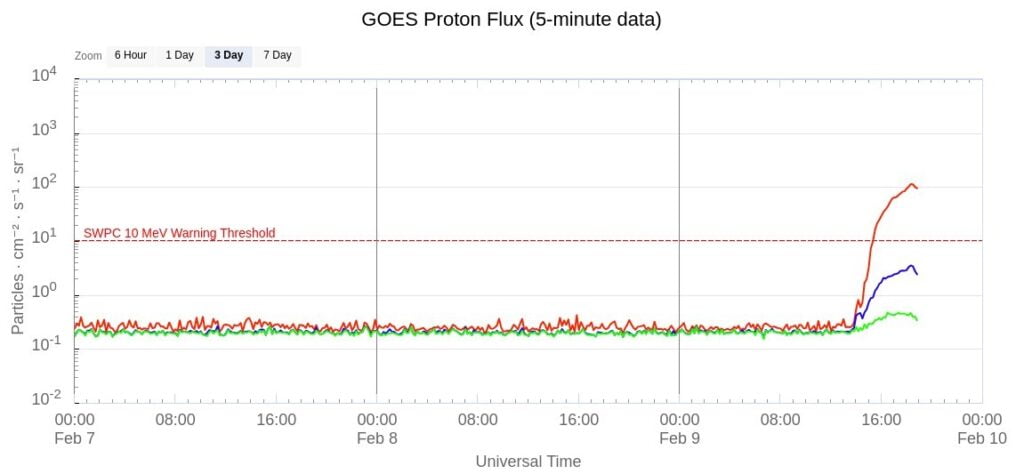

S2 – Moderate solar radiation storm threshold was reached at 18:38 UTC.
Potential effects (S2 – Moderate):
Biological: Passengers and crew in high-flying aircraft at high latitudes may be exposed to elevated radiation risk.
Satellite operations: Infrequent single-event upsets possible.
Other systems: Small effects on HF propagation through the polar regions and navigation at polar cap locations possibly affected.
A Polar Cap Absorption Event (PCA) is in progress since 17:10 UTC today, SWPC forecasters said. PCA events result from solar energetic particles funneling down along magnetic field lines at Earth’s poles into the high atmosphere. These events can lead to high frequency (HF) communication degradation or loss at and near the polar regions. These energetic particles do not reach low enough into the atmosphere to be of any concern to the general public, so they do not need to be concerned.
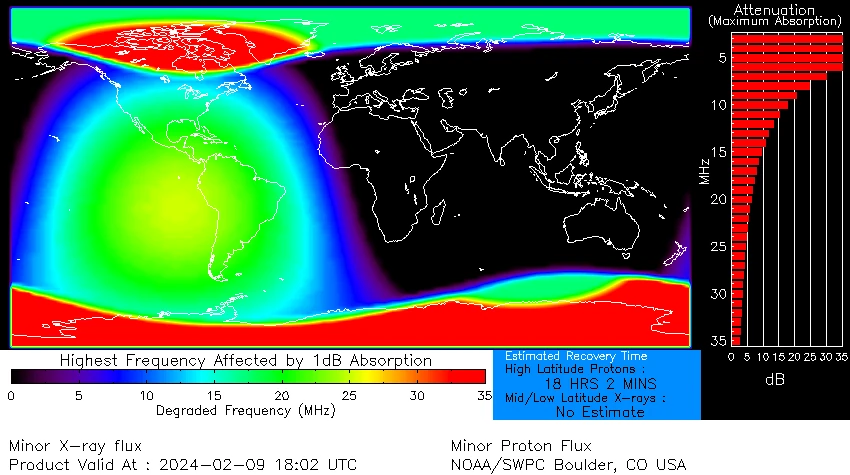

Featured image credit: NASA SDO/AIA 131, The Watchers
If you value what we do here, create your ad-free account and support our journalism.
Long-duration M5.1 solar flare erupts from Region 3575
Wednesday, February 7, 2024
Long-duration M4.2 solar flare erupts from Region 3575
Tuesday, February 6, 2024
M6.7 solar flare erupts from Region 3559, producing S2 – Moderate solar radiation storm
Monday, January 29, 2024
Solar filament eruption produces Earth-directed CME
Tuesday, January 23, 2024
Complex filament eruption produced Earth-directed CME, impact expected late January 22
Sunday, January 21, 2024
Major X5.0 solar flare erupts from Region 3536 — the strongest flare of Solar Cycle 25
Monday, January 1, 2024
Multiple M-class solar flares and CMEs, possible CME impact on December 27
Monday, December 25, 2023
